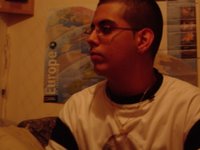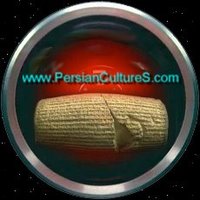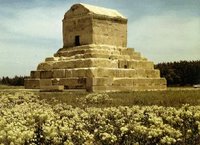Tuesday, May 09, 2006
344. ايران شناسي: نسل ِ سوم در راه
پويش و كوشش ِ بنيادين و فرهيخته براي ِ شناخت ِ ايران ِ كهن و امروزين و سويه هاي ِ گوناگون زندگي ي ِ فرهنگي، هنري، ادبي، اجتماعي و سياسي ي ايرانيان، براي نخستين بار در روزگار ما آغاز شده و تا كنون چند نسل از رهروان در اين راه فرخنده گام زده و دستاوردهايي از خود بر جاي گذاشته اند.
امّا اين كار ِ كارستان، درنگ پذير و پايان يافتني نيست و تا ايران و ايراني هست، بايد ايران شناسان نيز همواره در كوشش و كُنش باشند و نسل از پس ِ نسل، بار ِ اين خويشكاري را بر دوش گيرند و پس از ورزيدن ِ آن در حدّ ِ زمان و توان، آن را به پسينيان خود بسپارند.
خوشبختانه در دهه هاي ِ اخير، پيوسته شاهد اين فرآيند ِ شكوهمند بوده ايم و اكنون ديگر با ديدن ِ هر روزه ي ِ دهها اثر از جوانان هوشيار و كوشا در رسانه هاي چاپي و الكترونيك درونْ مرزي و جهاني، مي توانيم با خشنودي ي خاطر، اين سروده ي سايه، شاعر معاصر را برخوانيم كه: "يك مرد اگر به خاك مي افتد/ بر مي خيزد به جاي او صد مرد/ اين است كه كاروان نمي مانَد!"
*
در خانواده ي ِ خود ِ من نيز نسل ِ سوم، گام در راه نهاده و مرحله ي ِ رازآموزي ي ِ ايران شناسي را آغاز كرده است. آريا
 نبيره ي برومند من، يكي از نوگام ترين ِ اين رهروان است. او كه در سال 1367 در فرانكفورت آلمان زاده شد، دوران كودكي ي خود را در همان سرزمين گذراند و درسال 1373 به استراليا آمد و دوره هاي دبستان و دبيرستان را در اين كشور طي كرد و هم اكنون دانشجوي رشته ي ِ رسانه هاي همگاني در دانشگاه بزرگ "جيمز كوك" در ايالت كوينزلند اين كشور است.
نبيره ي برومند من، يكي از نوگام ترين ِ اين رهروان است. او كه در سال 1367 در فرانكفورت آلمان زاده شد، دوران كودكي ي خود را در همان سرزمين گذراند و درسال 1373 به استراليا آمد و دوره هاي دبستان و دبيرستان را در اين كشور طي كرد و هم اكنون دانشجوي رشته ي ِ رسانه هاي همگاني در دانشگاه بزرگ "جيمز كوك" در ايالت كوينزلند اين كشور است.آريا -- با آن كه جز دو سفر ِ كوتاه در خردسالي، به ايران نداشته و همواره در خارج به سر برده است و هيچ خاطره ي ِ شخصي هم از ايران ندارد -- نه تنها زبان ِ فارسي را در خانواده آموخته؛ بلكه در كنار ِ برنامه هاي ِ آموزشي ي ِ اين جايي اش، هرگز از ايران و فرهنگ ِ ايراني غافل نمانده و با گرايشي پرشور به تاريخ و فرهنگ ايراني، هرچه را كه در اين راستا بيابد مي خوانَد و مي كاود تا بهتر و بيشتر دريابد و از آن گنج شايگان، آگاه تر گردد. او از نگاه و برخورد ِ منفي ي ِ غربيان و افسون زدگان ِ رسانه هاي غرض ورزشان به ما ايرانيان، دل آزرده است و مي خواهد يا شناخت ِ آگاهانه ي ِ فرهنگ ِ نياكان و آرمان هاي ِ والاي ِ ايرانيان ِ آزاده ي امروزين، به غربيان بفهماند كه تا چه اندازه در اين زمينه دچار كژانديشي و دُژآگاهي اند.
آريا از كوشش بي ادّعاي ِ نياي خود در زمينه ي ايران شناسي خشنودست و خود را عضو جوان ِ كانون پژوهشهاي ايران شناختي مي شمارد و هيچ فرصتي را براي ِ حضور در دفتر ِ اين كانون و پرس و جو در باره ي ِ ريزه كاري هاي فرهنگ ايراني، از دست نمي دهد. او در سالهاي ِ گذشته، همواره سخن گوي ِ آرام و بُردبار ِ فرهنگ ِ ايراني در نهادهاي آموزشي ي ِ استراليا و در ميان دوستان ِ استراليايي اش بوده و نيك دلانه كوشيده است كه با عرضه داشتن ِ گزارشهاي ِ پژوهشي ي ِ روشنگر، نقش ِ بدآموزي هاي ِ غرض ورزانه ي رسانه ها و نهادهاي اين جا نسبت به ايران و ايراني را از ضمير ِ شنوندگان و خوانندگان ِ گزارشها و تحليل هايش بزدايد.
آريا در اين روزها سرگرم ِ خواندن و بررسيدن ترجمه ي ِ انگليسي ي گاهان ِ زرتشت است

و مي خواهد در يك مسابقه ي ِ جهاني ي ِ گاهان شناسي براي جوانان، شركت كند. كاميابي ي او را آرزو مي كنم.
*
براي ِ ارج گزاري ي ِ كوشش ِ راستين و دل سوزانه ي ِ آرياي ِ گرامي و خوش آمد گويي بدو در آستانه ي ِ دروازه ي جهان ِ ايران شناسي، درآمد ِ 344 اين تارنما را ويژه ي ِ او مي كنم و يكي از گزارش هايش را -- نمونه وار -- در پي مي آورم. گامهايش در اين راه فرخنده استوار باد!
و خوش آمد گويي بدو در آستانه ي ِ دروازه ي جهان ِ ايران شناسي، درآمد ِ 344 اين تارنما را ويژه ي ِ او مي كنم و يكي از گزارش هايش را -- نمونه وار -- در پي مي آورم. گامهايش در اين راه فرخنده استوار باد!
چهارشنبه بيستم ارديبهشت 1385
Centre For Iranian Studies
Persia(/Iran), Past and Present

Located in South-West Asia, There is a huge country of some 1,645,000 kilometres in area. That’s three times the size of France!

Because of its size, Iran is a land of diversity and contrast, of sand deserts and rainforests, snow-capped mountains and coral islands. The land’s also rich in oil, gas and other minerals.
Iran’s plateau is 1,000 metres above sea level and there are two main mountain ranges, the Zagros and pictured below is the Alborz.

Most of Iran has an annual rainfall of less than 20cm, but along the lush Caspian coast, the rainfall is six times as high. The temperature also varies from 50 degrees Celsius in the hot summer, to as low as 25 degrees below zero in parts of Azerbaijan.
Heavy snow is normal in the north of the country between November and March and frost occurs almost everywhere.
People and Religion
The vast majority of Iranians are Moslems of the Shi’a sect (89% of 70 million people). There are also many Christians, Jews and Zoroastrians (followers of Iran’s ancient religion before Islam) all around the country. The people of Iran are predominantly Aryan, there are also Indian, Jewish, Arab and Negroid Iranians that make up some of the ethnic groups present to this day. Most of these ethnicities can be traced back living together thousands of years back, in ancient Persia. Now these modern day Iranians can trace their roots back to their ancestries, which explains today’s diversity that still thrives.
History
The Iranian monarchy was one of the oldest in the world, dating back 2,500 years to the Achaemenian Empire, which was founded by Cyrus the Great.

His empire stretched from Ethiopia to India, with 127 provinces and 28 different nationalities.

While all other world powers persecuted and discriminated against the Jews, (e.g. The Egyptians, Assyrians, Babylonians, Romans and recently Germans and the Russians) the Persians were the only world power who actually liberated and protected the Jews (the only monotheistic religion of that time).
By doing so, the Persians pioneered the freedom of religion and culture of the minorities in the world, thus in the Old Testament of the Bible Cyrus the Great was recognized as the saviour of the Jews.


 The tomb of Cyrus the Great
The tomb of Cyrus the GreatThe monarchy remained until 1978, where there was an Islamic Revolution and the last Shah (king) was forced into exile. By leaving Iran, the monarchy came to an end and Ayatollah Khomeini became the supreme leader of the Islamic Republic of Iran. Only one year after the Islamic Republic’s independence, Iran and Sadaam Hussein’s Iraq had an 8 year war which lasted till 1988, killing hundreds of thousands. In that decade a lot of people died, fled, and were born. This was in fact, a huge baby boom generation which is showing now as 80% of Iran’s population is in between 16 and 35 years of age.

And after all, today's Iranians are very proud to have a world wide recognized source of academic knowledge on the whole Persian history and culture, including different aspects of life of this ancient nation. That is Encyclopaedia Iranica

which was published untill Volume XIII (A to I) and still is in publication. Also it has an online version:
http://www.iranica.com/
Ethnic groups:
Persian 51%, Azeri 24%, Gilaki and Mazandarani 8%, Kurd 7%, Arab 3%, Lur 2%, Baloch 2%, Turkmen 2%, Other 1%
Life expectancy at birth:
